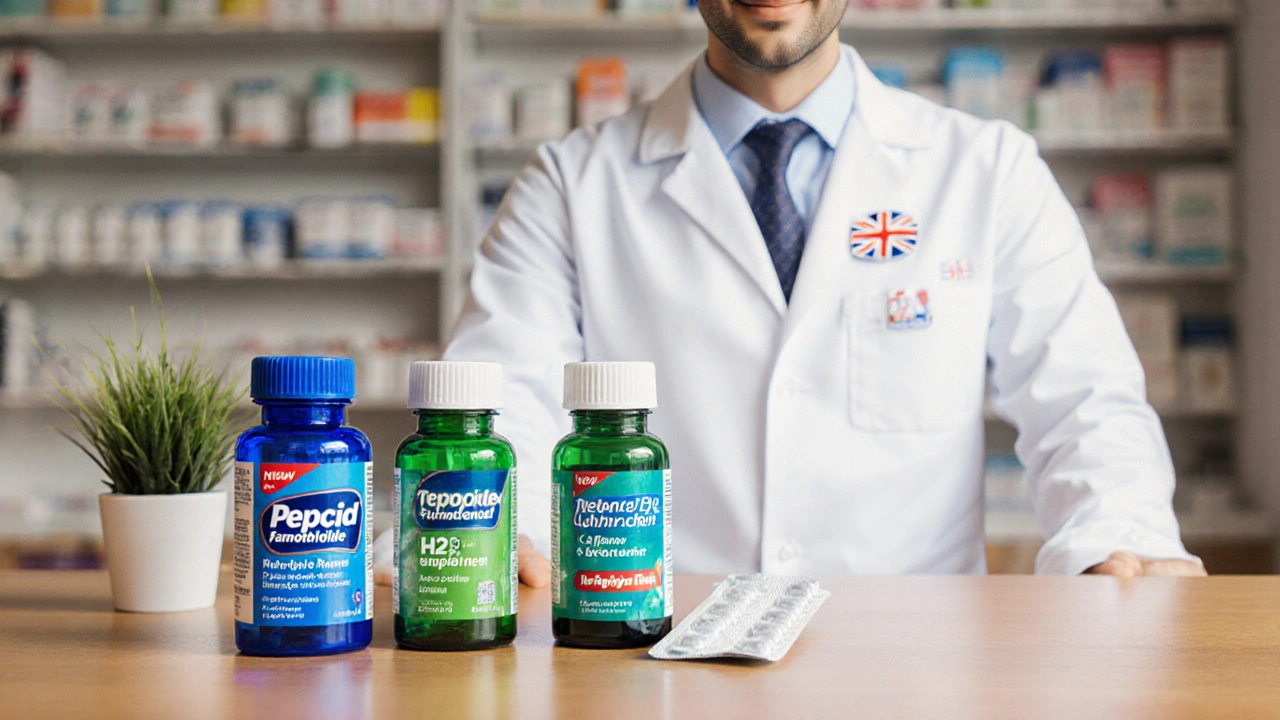Famotidine Explained: What It Is and When to Use It
Famotidine is a medicine that lowers stomach acid. It belongs to the H2‑blocker class, which means it tells the stomach to produce less acid. Doctors usually prescribe it for heartburn, acid reflux, and stomach ulcers.
If you’ve ever felt a burning feeling after a big meal, famotidine can calm that sensation. It works faster than some other acid reducers, often giving relief within an hour. Many people prefer it because it’s less likely to cause drowsiness.
How to Take Famotidine Correctly
Take famotidine with a glass of water, and you can swallow it with or without food. The usual adult dose for heartburn is 20 mg once or twice a day, but for ulcers doctors might order 40 mg daily. Always follow the prescription label.
Don’t split or crush the tablet unless your doctor tells you to. If you miss a dose, take it as soon as you remember, but skip it if it’s almost time for the next one. Doubling up can increase the risk of side effects.
Common Side Effects and When to Call a Doctor
Most people tolerate famotidine well. The most frequent complaints are mild headache, dizziness, or a dry mouth. Some folks notice mild constipation or diarrhea, which usually fades after a few days.
If you develop a rash, trouble breathing, or swelling of the face or tongue, seek medical help right away. Those are signs of a rare allergic reaction that needs immediate attention.
Kidney problems can make famotidine build up in the body, so people with kidney disease should get a lower dose. Your doctor may run a simple blood test to check kidney function before starting the drug.
Pregnant or breastfeeding women should discuss famotidine with their provider. Current research shows it’s generally safe, but the doctor will weigh benefits against any potential risks.
When you finish a course of famotidine, you don’t need a taper. The drug leaves the system quickly, so you can stop as directed without withdrawal symptoms.
If you need a long‑term solution for acid reflux, combine famotidine with lifestyle changes: avoid spicy foods, eat smaller meals, and stay upright after eating. Weight loss and quitting smoking also help reduce acid production.
Buying famotidine online can save money, but choose reputable pharmacies. Look for sites that require a prescription, show a valid pharmacy license, and have clear contact information. Cheap generic versions contain the same active ingredient as brand‑name Pepcid.
Price comparison tools let you see the cost per tablet across several online stores. Many pharmacies offer discounts for bulk orders, so a 30‑day supply often costs less per pill than a 7‑day pack.
Keep your medication in a cool, dry place, away from direct sunlight. Store it out of reach of children, and discard any tablets that are past their expiration date.
Overall, famotidine is a straightforward, effective option for controlling excess stomach acid. By understanding the correct dosage, watching for side effects, and buying from a trustworthy source, you can manage heartburn and ulcers without hassle.
Pepcid (Famotidine) vs Other Acid‑Reducer Options: A Practical Comparison
Discover how Pepcid (famotidine) stacks up against other H2 blockers and proton‑pump inhibitors. Get clear guidance on uses, side effects, and choosing the right acid‑reducer.
